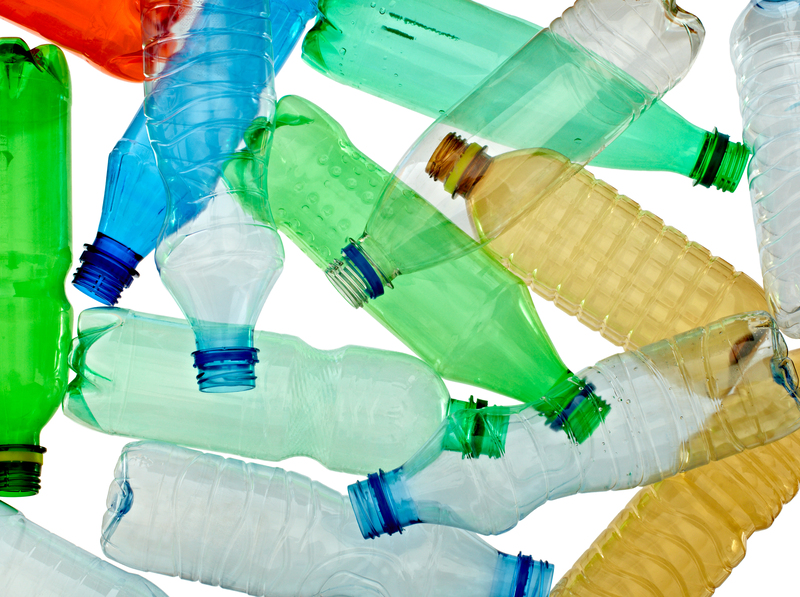How Global Actions Aim to Stop Microplastic Pollution
Microplastic pollution has emerged as a pressing environmental challenge, capturing the attention of scientists, policymakers, and communities worldwide. These microscopic plastic particles--typically less than 5mm in diameter--are ubiquitous, infiltrating oceans, rivers, soil, air, and even the food we consume. Tackling the proliferation of microplastics necessitates coordinated and innovative global interventions. In this article, we will explore how collective international efforts are confronting the crisis and advancing toward effective solutions.

Understanding Microplastic Pollution
What Are Microplastics?
Microplastics are tiny fragments or beads that originate from the breakdown of larger plastics or are manufactured intentionally for specific use, such as in personal care products. Their omnipresence across diverse ecosystems stems from everyday activities, waste mismanagement, and industrial processes.
- Primary microplastics: Produced directly for use in products like toothpaste, cosmetics, and industrial scrubbers.
- Secondary microplastics: Result from the fragmentation of larger plastic debris, such as bottles, bags, and fishing nets, due to environmental factors like sunlight and wave action.
Why Are Microplastics Harmful?
Microplastic pollution poses significant threats to marine life, human health, and environmental integrity:
- Ingestion by wildlife: Aquatic organisms often ingest microplastics, mistaking them for food, leading to physical harm and chemical contamination.
- Chemical exposure: Microplastics can absorb and transport toxic chemicals, contributing to the bioaccumulation of hazardous substances in food chains.
- Human health risks: Studies have detected microplastics in drinking water and food, although the long-term health implications are still under investigation.
The Scale of the Microplastics Crisis
Recent research estimates that millions of tons of microplastics are released annually into oceans and terrestrial environments. These minuscule particles are now found in Arctic ice, remote mountain regions, and the deepest parts of the ocean, demonstrating how pervasive the issue has become. Countries worldwide are waking up to the urgent need for global action to combat microplastic contamination before its consequences become even more dire.
International Policies Addressing Microplastic Pollution
The United Nations and Global Partnerships
The United Nations (UN) has been at the forefront of fostering international collaboration to combat plastic pollution, including microplastics. The UN Environment Assembly (UNEA) is recognized for its major role, with several landmark resolutions passed to address plastic waste:
- 2017 Resolution: Called for global action to reduce marine litter and microplastics, promoting life cycle approaches.
- 2022 Historic Resolution: Agreed to negotiate an internationally legally binding instrument by 2024 to end plastic pollution, including addressing the full life cycle of plastics--from production and use, to disposal and microplastic leakage.
These UN initiatives aim to align national policies, raise awareness, and drive the creation of binding agreements for microplastics reduction globally.
Regional Regulations and Bans
Several governments and regional bodies have enacted specific measures to reduce microplastic emissions:
- European Union (EU): The EU's European Chemicals Agency (ECHA) has proposed broad restrictions on microplastics intentionally added to products, including cosmetics and detergents. In 2023, the EU voted to ban microplastics in certain applications, expected to prevent the release of thousands of tons yearly.
- United States: The Microbead-Free Waters Act of 2015 bans the manufacture and sale of rinse-off cosmetics containing plastic microbeads.
- Canada: Canada prohibits the sale and manufacture of toiletries containing microbeads, labeling microbeads as a toxic substance under the Canadian Environmental Protection Act.
These regulations demonstrate varied approaches by nations and regions to curb microplastic contamination at the source.
Innovative Approaches and Technologies for Reducing Microplastics
Advances in Waste Management
Better waste management is a cornerstone of effective microplastic pollution prevention. Cities and countries are implementing improved recycling systems, stricter enforcement against littering, and encouraging a shift toward a circular economy that minimizes waste and promotes reuse.
Development of Biodegradable Alternatives
The introduction of biodegradable materials and eco-friendly compounds in consumer products serves as a crucial strategy to replace conventional plastics and reduce microplastics generation. Companies are investing in R&D to develop new packaging materials, clothing fibers, and household products that break down safely in the environment.
Filters and Capture Technology
Engineering solutions are also making an impact:
- Microfiber filters: Washing machine filters capable of trapping synthetic fibers from laundry, a major source of microplastic discharge.
- Stormwater and wastewater treatment upgrades: Advanced filtration systems and membrane bioreactors in wastewater treatment plants reduce microplastics flowing into waterways.
- Road runoff systems: Grate covers and sediment filters capture tire wear particles and road dust before they reach aquatic systems.
Corporate Responsibility Initiatives
Brands and retailers are responding to consumer concerns by:
- Phasing out microbeads from personal care products.
- Designing clothing and textiles to shed fewer fibers.
- Assisting in plastic take-back programs.
These voluntary corporate actions, when scaled, can significantly reduce microplastics pollution globally.
Public Awareness and Educational Campaigns
Elevating the Public's Understanding
Global awareness is crucial for the success of anti-microplastic strategies. Educational campaigns--by governments, NGOs, and international agencies--have proven fundamental to changing behaviors and advocating for stronger policies. Media outlets have amplified the voices of scientists and activists, bringing the issue into public discourse.
Citizen Science and Community Action
Involving local communities through citizen science projects has enabled the mapping and monitoring of microplastic pollution sources. Volunteers gather data, organize clean-ups, and promote sustainable consumption, helping bridge the gap between science and society.
Key Challenges to Global Efforts Against Microplastics
- Lack of standardized definitions and measurements: Global collaboration is hampered by inconsistent methodologies for detecting and quantifying microplastics, making comparative analysis and data collection difficult.
- Insufficient infrastructure: Developing nations face significant hurdles in implementing advanced waste management systems, often resulting in plastic leakage and microplastics proliferation.
- Complexity of microplastics sources: With countless product and pollution pathways, effective regulation and enforcement require unprecedented coordination across industries and borders.
Addressing these hurdles is essential for the success of global microplastics reduction initiatives.
Emerging Solutions: Research and Innovation
Cutting-Edge Scientific Research
Ongoing research is revealing the full scope and impact of microplastic pollution while identifying new ways to mitigate its effects:
- Development of enzyme-based recycling processes to break down plastics at the molecular level.
- Bio-inspired filtration systems for water and air purification.
- Advanced satellite and sensor technology for tracking microplastic movement across the globe.
International Collaboration and Knowledge Sharing
Global networks--such as the International Marine Litter Research Network and the Global Partnership on Marine Litter (GPML)--facilitate data sharing, joint research, and capacity-building programs, uniting nations and stakeholders around a common objective: eradicating microplastic pollution.

The Roadmap to a Microplastics-Free Future
Key Elements of an Effective Global Strategy
For widespread and lasting progress, international actions to stop microplastic contamination must prioritize:
- Prevention: Phase out products containing microplastics and promote sustainable alternatives.
- Better Waste Management: Invest in infrastructure, including recycling, clean-up, and circular economy practices.
- Research and Innovation: Fund breakthrough technologies and interdisciplinary studies.
- Public Engagement: Enhance education and involvement of all societies, supporting behavioral change.
- Policy Harmonization: Develop standardized regulations, monitoring methods, and compliance mechanisms worldwide.
The Role of Individuals
While systemic action is vital, every individual can contribute to the fight against microplastics:
- Choose products free of microbeads and microplastics.
- Advocate for tougher environmental laws and responsible industry practices.
- Support brands that prioritize sustainability and innovation.
Conclusion: United for a Cleaner, Safer Planet
Microplastics pollution is a truly global environmental threat, but it is not insurmountable. International cooperation, pioneering technology, and informed citizens working together form the foundation of a cleaner, safer world. By continuing to uphold ambitious goals, forging partnerships, and inspiring action across all levels of society, humanity stands a real chance to stop microplastic pollution and protect the health of both people and our planet.
Together, through robust and coordinated global actions, we can turn the tide against microplastics and ensure a sustainable future for generations to come.